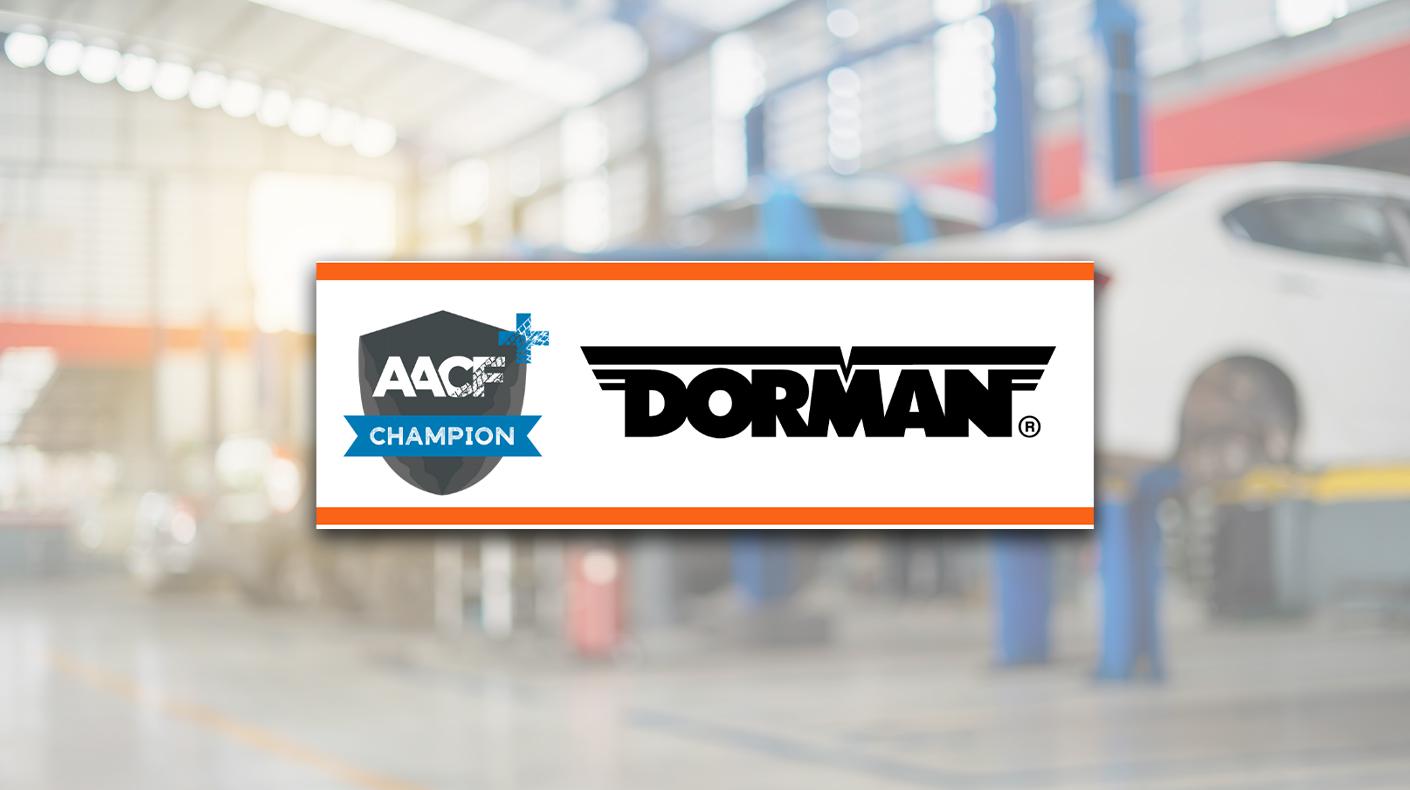By Christine Corelli
Join Corelli and the SEMA Education Institute (SEI) for a webinar, “Capture Your Competitors’ Competition and Keep Them, Thursday, December 6, at 10:00 a.m. (PST). SEMA webinars are free to SEMA members and only $29 for non-members.
 |
|
Forget tough. Today’s competition is fierce! Now, more than ever, your commitment to establishing a true "team" culture is not optional—it is vital to the success of your automotive aftermarket business and a major key to survival in today’s volatile economy.
Is it easy to establish highly effective and proficient work teams? Absolutely not. Does it simply mean that everyone on your team and in every department is working toward a common goal? That would be too easy.
There are two major challenges when it comes to creating a true team culture. The first consideration is that teamwork is voluntary. You cannot force anyone to be a team player. The second is that it does not necessarily come naturally; teamwork requires training. Here's why. Most individuals have been programmed from childhood to excel as individuals and not as team players. Unless a person has had a teamwork training program or experience on a sports team under the direction of that rare, dynamic coach, he or she does not know how to perform effectively as a member of a team.
In spite of these obstacles, it is absolutely critical to develop teamwork within your business, regardless of whether you are a team of two or 2,000. You simply can’t achieve success through turbulent times without the full support of every employee.
You’re Only as Good as Your Pit Crew
Think of yourself as a professional race car driver. No matter how proficient and daring you are behind the wheel, a split second can make or break you on the course. You cannot win the race without a highly cohesive and dynamic pit crew.
A pit crew is a great example of teamwork, as they must work together as a highly cohesive team to assist the driver in winning the race. There are many similarities in what a pit crew must do for their professional driver and what your team must do for you. Review these few below:
- A pit crew is committed to the driver and focused on the goal of helping them win the race. Each individual must perform to the highest capacity and as a unified team, just as your team must deliver their best performance each day, be committed to helping you achieve your goals and be focused on your competitive strategy.
- A pit crew has all parts pre-staged before the race for greater speed and efficiency when the driver is being serviced. Your parts and service areas should be neat and organized, all parts should be shipped by the end of every day and new parts should be put away unless they are being installed. Your team should also have procedures and practices in place for fast and efficient customer service.
- A pit crew practices gassing, changing tires, engines, parts and tearing off breakaway windshields to achieve ever greater speed and efficiency. In addition, they train continuously. Your team must work together to increase sales, improve processes, procedures and find ways to streamline your business.
- Pit crews have meetings to share ideas for continuous improvement with an atmosphere of open communication. These meetings can be formal or informal. A huddle will do just fine. They stick to an agenda and don’t go off into discussions other than what has been set. Communication is “open,” where everyone feels free to voice an opinion or bring forth an idea and speaks up without being asked. You should have weekly meetings that last no more than a half-hour to discuss sales, service problems, ideas for new promotions or value-added packages to offer customers and more. If you have set the tone for open communication in your business, your people will and should participate, and speak openly.
- Often, a pit crew will participate in competitions with other race drivers. Your team must recognize that each and every day, they are competing for you against other businesses. They must develop an obsession to deliver their best performance each and every day, just like a pit crew.
Winning the Competitive Battle
Establishing highly effective and proficient team of professionals who can perform together in an environment of open communication and idea sharing—both internally and externally—is critical. It is the only way to ensure that your company can perform at the highest level of quality in all you do. And it is certainly key to whether you can stay in the race and win the competitive battle during these tough times.
What can happen when there is a lack of teamwork?
- Organization for projects can be compromised. Lack of coordination and planning can cause problems for you and your customers.
- You can bring disharmony into your environment. That's not healthy in today's highly competitive and stressful work climate. Harmony within your team is critical to job satisfaction, customer retention and business growth.
- The people in your business can fail to assist you and each other in driving business growth and doing all they can to increase sales, control costs and obtain higher levels of profitability.
- Your people can lack the capacity to understand the pressures you face of keeping your business afloat and customers happy.
- Your people will lack a clear understanding of what customers want, need and expect.
- Barriers can develop among people. Finger-pointing and blaming can occur.
- Walls can build. Territorialism can exist within your team. An “It’s not my job” attitude can exist, instead of a “What can I do to help you?” attitude.
- Silos can form, where each department or location operates in its own way.
- Quality workmanship can be compromised.
- Conflict can arise and not be resolved. Problems and can occur and not be “nipped in the bud.”
- Customers will not receive exceptional service.
No business can afford any of these situations. On the other hand, when there is a true team culture, positive outcomes are achievable. Effective teams can take problems and fragments of ideas and mold them into solutions and positive results. Ideas can build one on top of another. Individuals, working as a team, can take these scattered bits of information and structure a wide variety of options and solutions to the problems you encounter.
Consequently, teamwork promotes creativity and innovation. Relationships are strengthened—inside and outside your organization. Issues are uncovered, conflict is resolved and people all pull in the same direction to achieve their goals and provide exceptional service. Voila! Individuals are effectively becoming solid team players, and strong leaders emerge.
Sound too ideal? It's not. It’s achievable. All smart organizations operate at this level if their leaders insist they do. Why shouldn't yours? To begin, follow these steps to move your company forward and take its place among those that will be able to not only simply survive, but also prosper in the future.
1. Practice dynamic leadership: Remember whose job it is to keep your team motivated in today’s tough business environment. It’s yours! If they see worry, doom and gloom on your face, they won’t be inspired. You, as their team leader, must display dynamic leadership. As a leader, you are also a teacher. Think of yourself as a great sports coach, coaching and encouraging your team to excel. Coach them toward greatness. Make your team members feel as if they are working with you, and not for you. If they feel they are working for you, you will get robots that go through the motions of their job and never show initiative beyond their job description. If they feel they are working with you, they are more likely to look forward to coming to work each day.
2. Get the right players on the team: Have the courage to remove anyone who might prevent the team from performing at the highest possible level. You can't afford to have even one weak player. Once you have the right people on your team, your job will be infinitely easier. When you have people who perform to their highest capacity and provide outstanding service to customers and the other members of their team, you will be able to focus on business growth and development.
3. Communicate: Sit down with your team and tell them how much you appreciate the good job they do for you. Then, describe what you would like to accomplish. Explain that you need their involvement in an important team-building and idea-sharing process. People tend to promote what they help to create. Asking for their ideas and input in this initiative is the first step in effective team-building. Employee involvement is critical to the success of your business.
4. Set expectations and competencies specific to each job role: Communicate your expectations for each team member,and also the expectations you have of them as a team. As a team they should demonstrate the following:
- They are all working toward the common goal of carrying your organization into a more successful future.
- Peer support will be practiced day to day.
- Conflict will be resolved amongst each other. If it cannot be resolved, they are to come to you.
- The team is empowered to solve problems on their own.
- Team members will speak openly about their opinions without being asked.
- Team members will not be afraid of losing their job when they do speak up.
- A high level of trust must exist between you, your team and the team members with each other.
- Team members are to demonstrate the core values of honesty, integrity, safety, respect, customer focus, teamwork, accountability, professionalism, family and concern for Earth and the environment.
6. Ask for ideas: Ask for ideas on how you can modify or eliminate any procedure that does not allow for flawless execution. Ask them how you can avoid wasteful spending and how you can cut costs during this volatile economy. Ask how you can improve productivity and morale. It is amazing how many great ideas you will obtain if you do it right.
7. Create guiding principles for the way the team will communicate and operate, and how all customers will be treated: Create guiding principles, have them printed out and posted around the office. Have each team member sign them, and agree to adhere to them. Then, assign a team to add to them quarterly. Use this document for new hires. Let them know that they won’t fit in with the team if they don’t practice these guiding principles.
8. Set rigorous, but achievable goals for sales, error-free performance, customer complaints and safety: You can keep your team pumped up by setting goals and then giving the entire team a small reward when they reach these goals.
9. Train your team: Arm your team with knowledge and skills so they can drive faster and smarter than your competitors. Better yet, consider teamwork training to help your team become a truly effective entity.
10. Establish five critical success factors and use them as your road map: Work with your team to establish five critical success factors for business success in 2013. This will be your road map to get you where you want to go. Print them out and put them on cards and on your walls so that your team doesn’t forget to stay the course.
Take a good hard look at your team and begin these steps as soon as possible.
Look Who’s Driving
You are behind the wheel in the racecar, striving to drive your business forward. Drive as smart and safely as you can and surround yourself with the smartest and most supportive pit crew you can possibly find.
The Biggest Difference
There is one major difference between a professional race car driver and you running your business: for them, there’s a finish line to cross. For you, the race for business growth has no finish line.
Times are tough. Real tough. Forget the old adage, “When the going gets tough…” Remember what the driver uses for fuel—the love of the race. As you are driving, remember how much you love this industry. Put your heart into it.
Just remember to enjoy the ride.
Join Corelli and the SEMA Education Institute (SEI) for a webinar, “Capture Your Competitors’ Competition and Keep Them, Thursday, December 6, at 10:00 a.m. (PST). SEMA webinars are free to SEMA members and only $29 for non-members.





